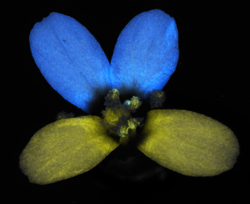How does your garden grow?
Developmental biologists are making strides in learning more about how plant growth is directed in such as a way as to eventually generate organs with a species-specific size and shape. The Arabidopsis KLU gene that encodes the cytochrome P450 (CYP) enzyme is known to regulate cell numbers and organ size. Researchers believe this contributes to growth signalling on the outer edges of plant organs; the question here is how far this signal can go. The 'Dynamics and mechanism of KLU-signalling in the control of plant organ size' (Damoklus) project aimed to study this mobile growth factor and offer greater insight into the coordination of growth in plants. In efforts to determine the range of action of the presumed growth signal, researchers generated chimaeric plants consisting of wild-type tissue with and mutant tissue without the CYP enzyme activity. Results showed that as well as promoting growth, the signal also coordinates growth of organs within one flower and of the different flowers within one flower head (inflorescence). Damoklus then worked to reduce the activity of other CYP genes in plants in order to determine if other played a role in controlling growth. This action resulted in some plants having smaller leaves and flowers and thinner stems, just like plants that don't have the original CYP gene. Project partners concluded that these CYP genes act to generate the mobile growth signal. Experiments to identify any other genes taking part in generating or perceiving the signal revealed one mutant line that could not activate the reporter gene. In these plants, even smaller organs were formed than in plants lacking the CYP gene. The Damoklus project was able to demonstrate that the growth signal is active throughout the whole inflorescence. This suggests that it is responsible for coordinating growth of the different organs and by extension ensures the symmetry of flowers, which is important for pollination. The successes achieved in the project can potentially lead to enhanced methods of manipulating organ growth in economically relevant crops.







